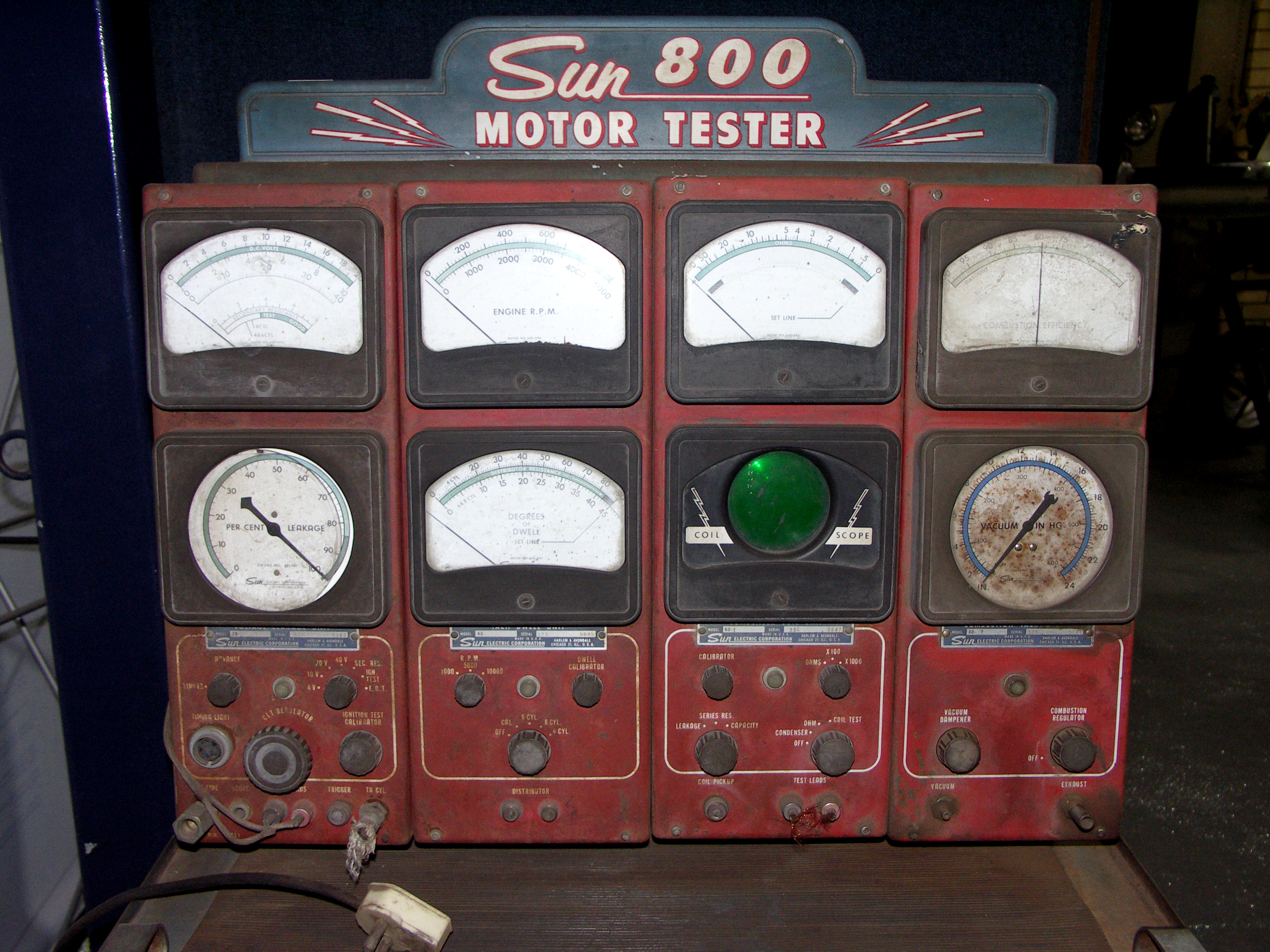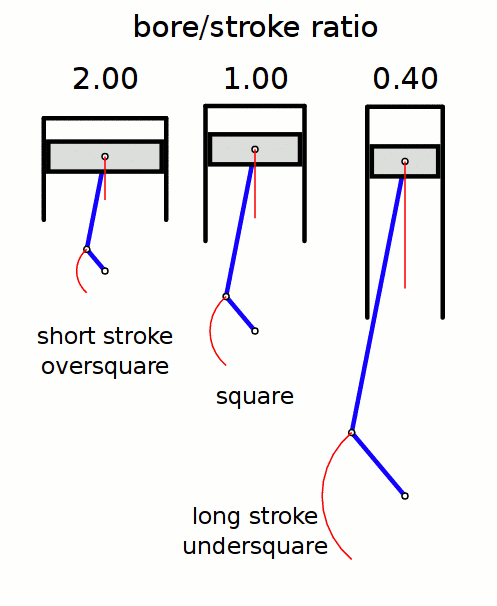|
Brake Horsepower Per Cubic Centimeter
{{Unreferenced, date=May 2019, bot=noref (GreenC bot) Brake horsepower per cubic centimeter or (bhp/cc) is a figure of merit that is used to indicate the ' state of tune' of an internal combustion engine. It is defined as the ratio of the engine's net power output to its displacement, the internal size. Power is measured at its rated speed and full throttle. The same measurement may also be stated in units of kilowatts per liter (kw/L). This term was first used by André Erasmus and Morné Basson. It is also termed specific power, although this should be qualified as ''volume-specific'' power. A similar measurement of power to weight ratio is also important, but takes into account the weight of the engine. Power density may also be considered similar, although this is usually stated in terms of the engine's external overall size, rather than its internal. A 'typical' car engine, of around 1980, would be considered 'highly-tuned' if it delivered more than 100 bhp/litre. ... [...More Info...] [...Related Items...] OR: [Wikipedia] [Google] [Baidu] |
Figure Of Merit
A figure of merit is a quantity used to characterize the performance of a device, system or method, relative to its alternatives. Examples *Clock rate of a CPU *Calories per serving *Contrast ratio of an LCD *Frequency response of a speaker * Fill factor of a solar cell * Resolution of the image sensor in a digital camera *Measure of the detection performance of a sonar system, defined as the propagation loss for which a 50% detection probability is achieved * Noise figure of a radio receiver *The thermoelectric figure of merit, ''zT'', a material constant proportional to the efficiency of a thermoelectric couple made with the material *The figure of merit of digital-to-analog converter, calculated as (power dissipation)/(2ENOB × effective bandwidth) /Hz* Luminous efficacy of lighting *Profit of a company *Residual noise remaining after compensation in an aeromagnetic survey *Battery life of a laptop computer [...More Info...] [...Related Items...] OR: [Wikipedia] [Google] [Baidu] |
Engine Tuning
Engine tuning is the adjustment or modification of the internal combustion engine or Engine Control Unit (ECU) to yield optimal performance and increase the engine's power output, economy, or durability. These goals may be mutually exclusive; an engine may be de-tuned with respect to output power in exchange for better economy or longer engine life due to lessened stress on engine components. Tuning can include a wide variety of adjustments and modifications, such as the routine adjustment of the carburetor and ignition system to significant engine overhauls. Performance tuning of an engine can involve revising some of the design decisions taken during the development of the engine. Setting the idle speed, air-fuel ratio, carburetor balance, spark plug and distributor point gaps, and ignition timing were regular maintenance tasks for older engines and are the final but essential steps in setting up a racing engine. On modern engines equipped with electronic ignition and fuel ... [...More Info...] [...Related Items...] OR: [Wikipedia] [Google] [Baidu] |
Internal Combustion Piston Engine
An internal combustion engine (ICE or IC engine) is a heat engine in which the combustion of a fuel occurs with an oxidizer (usually air) in a combustion chamber that is an integral part of the working fluid flow circuit. In an internal combustion engine, the expansion of the high-temperature and high-pressure gases produced by combustion applies direct force to some component of the engine. The force is typically applied to pistons (piston engine), turbine blades (gas turbine), a rotor (Wankel engine), or a nozzle (jet engine). This force moves the component over a distance, transforming chemical energy into kinetic energy which is used to propel, move or power whatever the engine is attached to. This replaced the external combustion engine for applications where the weight or size of an engine was more important. The first commercially successful internal combustion engine was created by Étienne Lenoir around 1860, and the first modern internal combustion engine, known as th ... [...More Info...] [...Related Items...] OR: [Wikipedia] [Google] [Baidu] |
Engine Displacement
Engine displacement is the measure of the cylinder volume swept by all of the pistons of a piston engine, excluding the combustion chambers. It is commonly used as an expression of an engine's size, and by extension as a loose indicator of the power an engine might be capable of producing and the amount of fuel it should be expected to consume. For this reason displacement is one of the measures often used in advertising, as well as regulating, motor vehicles. It is usually expressed using the metric units of cubic centimetres (cc or cm3, equivalent to millilitres) or litres (l or L), orparticularly in the United States cubic inches (CID, cu in, or in3). Definition The overall displacement for a typical reciprocating piston engine is calculated by multiplying together three values; the distance travelled by the piston (the stroke length), the circular area of the cylinder, and the number of cylinders in the whole engine. The formula is: : \text = \text \times \frac \times ... [...More Info...] [...Related Items...] OR: [Wikipedia] [Google] [Baidu] |
Power-to-weight Ratio
Power-to-weight ratio (PWR, also called specific power, or power-to-mass ratio) is a calculation commonly applied to engines and mobile power sources to enable the comparison of one unit or design to another. Power-to-weight ratio is a measurement of actual performance of any engine or power source. It is also used as a measurement of performance of a vehicle as a whole, with the engine's power output being divided by the weight (or mass) of the vehicle, to give a metric that is independent of the vehicle's size. Power-to-weight is often quoted by manufacturers at the peak value, but the actual value may vary in use and variations will affect performance. The inverse of power-to-weight, weight-to-power ratio (power loading) is a calculation commonly applied to aircraft, cars, and vehicles in general, to enable the comparison of one vehicle's performance to another. Power-to-weight ratio is equal to thrust per unit mass multiplied by the velocity of any vehicle. Power-to-weight ... [...More Info...] [...Related Items...] OR: [Wikipedia] [Google] [Baidu] |
Power To Weight Ratio
Power-to-weight ratio (PWR, also called specific power, or power-to-mass ratio) is a calculation commonly applied to engines and mobile power sources to enable the comparison of one unit or design to another. Power-to-weight ratio is a measurement of actual performance of any engine or power source. It is also used as a measurement of performance of a vehicle as a whole, with the engine's power output being divided by the weight (or mass) of the vehicle, to give a metric that is independent of the vehicle's size. Power-to-weight is often quoted by manufacturers at the peak value, but the actual value may vary in use and variations will affect performance. The inverse of power-to-weight, weight-to-power ratio (power loading) is a calculation commonly applied to aircraft, cars, and vehicles in general, to enable the comparison of one vehicle's performance to another. Power-to-weight ratio is equal to thrust per unit mass multiplied by the velocity of any vehicle. Power-to-weight ... [...More Info...] [...Related Items...] OR: [Wikipedia] [Google] [Baidu] |
Power Density
Power density is the amount of power (time rate of energy transfer) per unit volume. In energy transformers including batteries, fuel cells, motors, power supply units etc., power density refers to a volume, where it is often called volume power density, expressed as W/m3. In reciprocating internal combustion engines, power density (power per swept volume or brake horsepower per cubic centimeter) is an important metric, based on the ''internal'' capacity of the engine, not its external size. Examples See also *Surface power density, energy per unit of area * Energy density, energy per unit volume * Specific energy, energy per unit mass * Power-to-weight ratio/specific power, power per unit mass **Specific absorption rate Specific absorption rate (SAR) is a measure of the rate at which energy is absorbed per unit mass by a human body when exposed to a radio frequency (RF) electromagnetic field. It can also refer to absorption of other forms of energy by tissue, inc ... [...More Info...] [...Related Items...] OR: [Wikipedia] [Google] [Baidu] |
BMEP
The mean effective pressure (MEP) is a quantity relating to the operation of a reciprocating engine and is a measure of an engine's capacity to do work that is independent of engine displacement.Heywood, J. B., "Internal Combustion Engine Fundamentals", McGraw-Hill Inc., 1988, p. 50 When quoted as an ''indicated mean effective pressure'' (''IMEP''), it may be thought of as the average pressure acting on a piston during the different portions of its cycle. Derivation Let: :W = work per cycle in joule; :P = power output in watt; :p_\text = mean effective pressure in pascal; :V_\text = displacement volume in cubic metre; :n_\text = number of revolutions per power stroke (for a 4-stroke engine, n_\text =2);Wankel engines are four-stroke engines, so n_\text =2; the displacement V_\text is derived from the chamber volume V_\text by multiplying it with the number of rotary pistons i and 2: V_\text = 2 V_\text i (see Wolf-Dieter Bensinger: ''Rotationskolben-Verbrennungsmotoren'', Sprin ... [...More Info...] [...Related Items...] OR: [Wikipedia] [Google] [Baidu] |
Stroke Ratio
In a reciprocating piston engine, the stroke ratio, defined by either bore/stroke ratio or stroke/bore ratio, is a term to describe the ratio between cylinder bore diameter and piston stroke length. This can be used for either an internal combustion engine, where the fuel is burned within the cylinders of the engine, or external combustion engine, such as a steam engine, where the combustion of the fuel takes place ''outside'' the working cylinders of the engine. A fairly comprehensive yet understandable study of stroke/bore effects was published in ''Horseless Age'', 1916. Conventions In a piston engine, there are two different ways of describing the ''stroke ratio'' of its cylinders, namely: ''bore/stroke'' ratio, and ''stroke/bore'' ratio. Bore/stroke ratio Bore/stroke is the more commonly used term, with usage in North America, Europe, United Kingdom, Asia, and Australia. The diameter of the cylinder bore is divided by the length of the piston stroke to give the ratio. ... [...More Info...] [...Related Items...] OR: [Wikipedia] [Google] [Baidu] |



